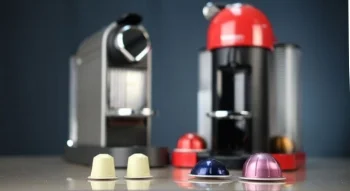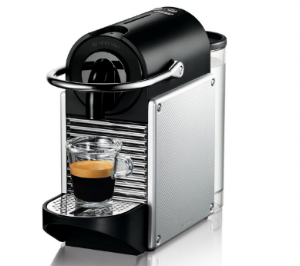Feel good about your cup of coffee
Just as recycling is important, so is the choice you make each morning with your cup of coffee. For you and for the planet.
But coffee is so much more than just a drink. We collectively consume 2.25 billion cups of coffee each day and, as the world’s second most tradable commodity after oil, coffee is now a multibillion-dollar global industry and growing.
This increase in demand has had a knock-on effect on the environment, with monoculture and sun-grown coffee now the norm. And given that most coffee growing regions are also home to some of the most delicate ecosystems on earth, the potential for serious damage is great.
The evolution of coffee growing
Once upon a time, all coffee was naturally organic and shade grown. Since most varieties of coffee are naturally intolerant of direct sunlight, coffee was traditionally grown under shade trees - most often fruit and nut trees which also helped to replenish the soil with valuable nutrients and allowed the land to remain fertile, generation after generation.
Although coffee started out as a shade-loving shrub, the high demand for coffee over time led to full-sun plantations, which required large quantities of fertilizers and pesticides.
The benefits of organic coffee
Today, coffee labeled as organic comes from farms that meet strict standards and according to these requirements, organic coffee is free of chemical contaminants, and the farms that grow it use practices to minimize side effects to workers and the environment.
As always, consumers have the power to influence how coffee is grown. Our choices can go a long way toward diminishing demand for unsustainable, sun-grown coffee.
Here are six good reasons to choose organic, shade-grown, fair trade coffee.
Reduced exposure to pesticides. Pesticide use is much greater on sun plantations, where the natural pest control provided by native birds and insects is missing. Toxic chemicals and fertilizers not only threaten the farmers who work with them, but also runoff into local water sources, killing off valuable microbes in the soil, and even depositing chemical residues in the harvested beans.
Save the forests. Deforestation goes hand-in-hand with sun-grown coffee. As of 2011, 2.5 million acres of forest in Central America alone have been clear cut to make way for sun plantations. Without canopy cover, the soil is much more vulnerable to erosion, which in turn facilitates run-off of pesticides and fertilizers. Deforestation is also a major contributor to global warming, accounting for about one-fifth of global greenhouse gas emissions.
Preserve biodiversity. Biodiversity is a direct victim of sun plantations, from the soil to the skies. As with any monoculture crop, the destruction of plant and animal diversity that occurs on sun plantations destabilizes natural food webs. The loss of a complex layer of humus kills off soil microbes and nitrogen-fixing organisms, resulting in depleted, nutrient-poor soil. Above ground, clear cutting displaces millions of plant and animal species native to traditional coffee-growing ecosystems. Compared to shaded farms, for example, an estimated 95 percent fewer birds are found on sun plantations.
Save the soil and the climate. Increasingly scientists warn that stripping soil of its natural ability to store carbon makes any form of industrial agriculture, including coffee sun plantations, a big contributor to global warming. Alternatively, by protecting the soil’s natural ability to sequester carbon, we can actually reverse global warming.
Support small farmers: Corporate agribusiness is the primary beneficiary of sun plantations. Small farmers, in contrast, are far less likely to support the clear cutting, toxic chemical usage and overall environmental destructiveness of sun growing. Supporting industrial coffee production means giving the go-ahead to sun farming, as well as edging out the small farmers who have a vested interest in the health of their land.
Drink better-tasting coffee: Taste is perhaps the casualty of sun growing that most directly affects consumers. Because coffee fruits ripen faster in the sun, they have less time to develop the positive qualities looked for by coffee connoisseurs. One study found that shade-grown beans are larger, less bitter (owing to greater carbohydrate accumulation), and more complex in flavor compared to their sun-grown counterparts.
Consumers who buy organic do make a difference. The next time you grab a cup of coffee, consider whether it is organic or not. The environmental impact of improperly cultivated coffee is simply too great to ignore. It is likely that most people don't buy organic coffee because they don't realize the impact of non-organic coffee. By educating ourselves we can begin to shift coffee production toward a more positive direction.
Drink organic, celebrate our beautiful world, and Happy Earth Day!
At Artizan Coffee, we try to live every day like it’s Earth Day by offering products and supporting initiatives that have a positive impact on the environment and human health year-round.
Artizan Coffee Company is dedicated to supporting sustainability all year long. That's why all of our products are USDA Certified Organic, grown without the use of chemical pesticides, herbicides, fertilizers or other additives, and many are also Fair Trade, Rainforest Alliance, and Bird-Friendly certified.
These certifications address a broad array of issues like eliminating chemical and pesticide usage, carbon footprint reduction, energy conservation, environmental preservation and fair prices for farmers. Additionally, we source decaffeinated coffees using all-natural 100% chemical-free processes like Swiss Water® Process and Mountain Water Decaf®.
We hope you’ll join us in creating a brighter tomorrow by making Earth-friendly decisions not only on Earth Day but every day. Together we can make a difference!













